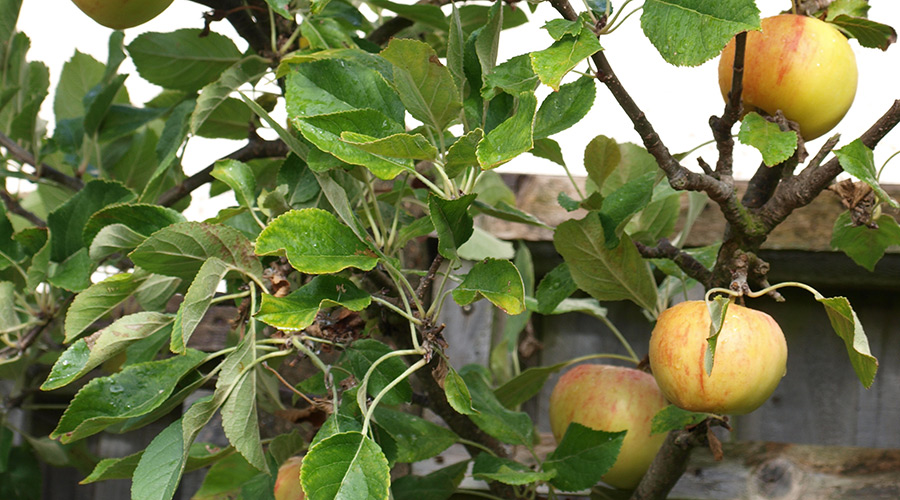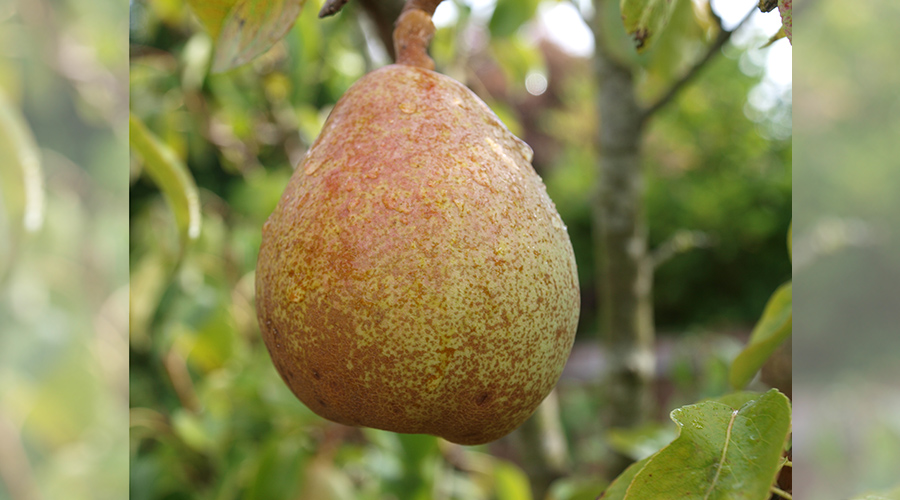As we speak, apples and pears are ripening on the trees. But how do you grow apple and pear trees from scratch and keep them alive? Our resident gardening expert, Professor Geoff Dixon, investigates.
Autumn is the ‘season of mists and mellow fruitfulness’, as John Keats said in his Ode to Autumn. It is a time for harvesting temperate tree fruits, especially apples and pears in gardens and orchards.
This fruit is distinctive and delicious. The ‘Sunset’ apple cultivar, derived from the Cox’s Orange Pippin, produces red and gold striped fruit and sweet tasting flesh, while the French pear cultivar doyenne du comice has the most superb taste if caught at peak ripeness.
 <
<
The sunset apple.
Both apples and pears ripen after harvesting, emitting ethylene and passing through a climacteric, or critical biological stage. When respiration reaches a peak, the fruits’ flavour is most satisfying.
Both apples and pears are best planted in late autumn or during winter when the trees are dormant, either as container-grown or preferably bare root trees. Place each tree in a hole that is large enough for the entire root system, ensuring that the graft union sits well above the soil level.
Each tree consists of two parts: the rootstock, selected originally from wild species, and the scion, which is the fruiting cultivar. Apple cultivars mostly dwarf Malling no. 9, and pear scions are grafted onto quince rootstocks. A stake should be driven into the hole before putting the tree in place.
Pour ample water into the hole, keeping the roots wet. Do so again once soil is replaced and firmed round the tree. As the tree establishes and produces leaves and flowers, water well and regularly, especially during dry periods.

French pear cultivar doyenne du comice
Feed with fertilisers that contain large amounts of potash and phosphate but minimal nitrogen. This encourages vigorous root growth. Sprinkling compost or farmyard manure around the tree helps retain soil moisture.
Climate change is having significant deleterious impacts on all members of the Rosaceae family, including apples and pears. Australian studies indicate that temperatures are reaching higher than the evolutionary maximum for these species.
This stresses the plants. It adversely affects their health and performance and reduces their ability to store carbon and produce fruit crops.

The pear scab Venturia pirina
Levels of pest and disease infections are increasing. In particular, sap-sucking woolly aphids (Eriosoma lanigerum) have increased from minor to major apple pests in the last decade. Pear scab Venturia pirina has become a major cause of defoliation.
Chemical control options for both are limited, but regular drenching sprays with seaweed extracts may reduce their impact. Seaweed extracts additionally provide some foliar absorbed nutrients and increase the visual quality of fruit.
Professor Geoff Dixon is author of Garden practices and their science, published by Routledge 2019.











